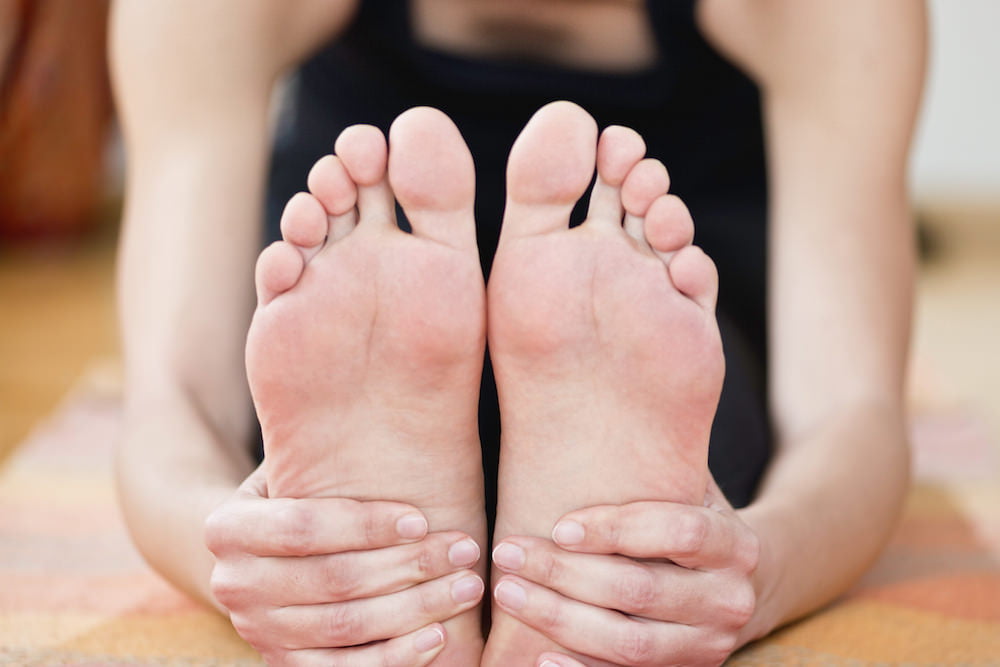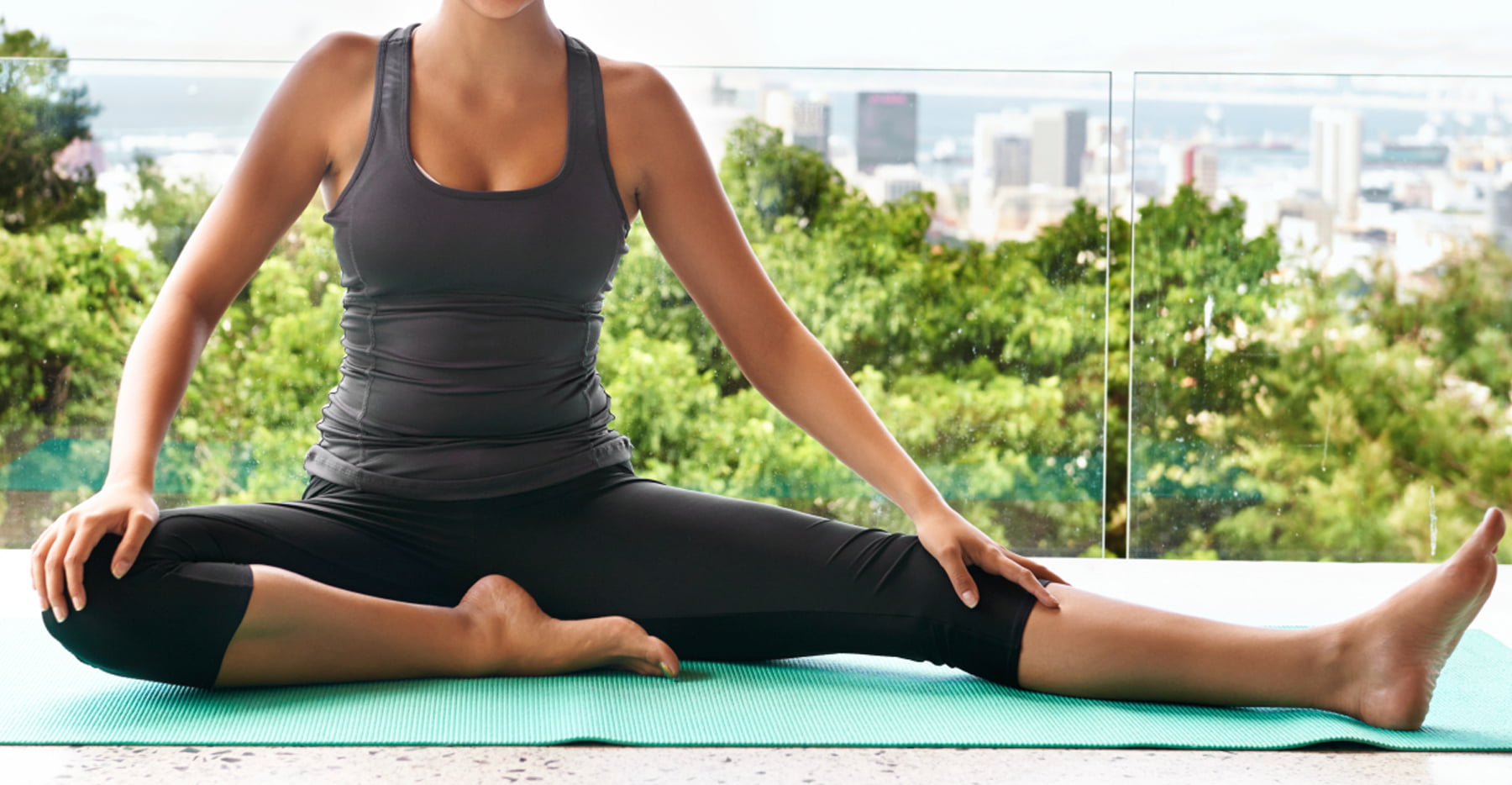The infection in the bladder is mostly due to bacterial infection within the bladder. People with weak immune systems usually have bladder infection due to yeast. At the very beginning, it is necessary to prevent this infection from spreading further. That’s why today we have come with yoga for bladder so that you can control problems related to your bladder on time.
Before we talk about yoga for bladder, let’s at first know a little about the bladder infection and its symptoms.
NOTE:
Infections in the bladder are a type of Urinary Tract Infection (UTI). This disease is more common in women.
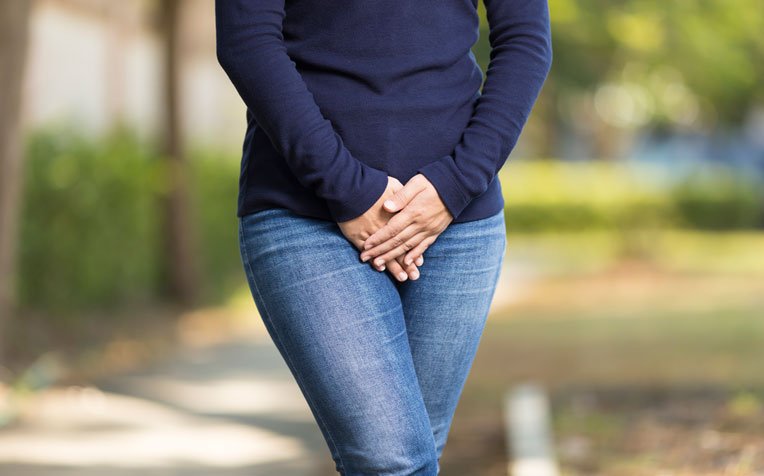
Source :- healthxchange . sg
Table of Contents
What Are The Causes OF Bladder Infection?
Bacteria through the urethra enter into the bladder, which causes infection in the bladder. Generally, bacteria present in bladder get out of the body, but some bacteria are sticking to the walls of the bladder and increasing their numbers inside the bladder. This results in bladder infection.
Such bacteria are naturally present in the large intestine of the body. When the bacteria come out and stick to the skin and enter the urethra then they start to produce infection.
NOTE:
In women, the urethra is very small and the mouth is open to the outside and is close to the anal. This is the reason that the bacteria enter the bladder inside the body of women very easily
What Are The Symptoms Of Bladder Infection?
Its symptoms can be detected based on some changes in urine or unusual feeling in any part of the body. Let’s now check out the symptoms of bladder infection below:
- Urine color appears to be fade or bleeding in the urine
- Burning or pain during peeing
- Fast urination while urinating
- Bad smell of urine
- Feeling excess pressure under the stomach during peeing
- When bladder infection spreads further, it also causes pain in the back.
- This pain is associated with an infection in the kidney and this pain continues in the back muscles as well as in other organs.
NOTE:
Due to infection in the kidney, there is often fever, cold, nausea and vomiting. Infections in the kidney are more serious than the bladder infection and need to be treated immediately.
Yoga For Bladder
Here we have provided some of the best yoga for bladder. Practice these below-mentions yoga poses to get rid of problem-related to the bladder.
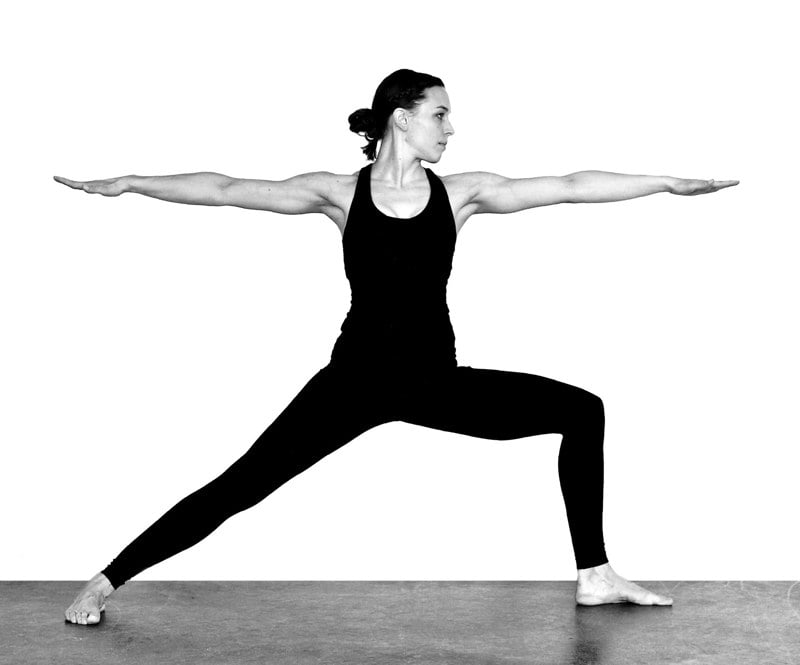
Source :- augustyoga . com
Virabhadrasana II (Warrior II)
This Virabhadrasana II (Warrior II) pose is very effective yoga for bladder. This yoga for bladder also helps to stretch the legs and ankles and makes them strong. So, let’s check out the steps to do Virabhadrasana II.
Recommended Articles :-
- Yoga For Belly Fat Loss: Get A Toned Belly With Yoga
- Some Easy And Effecting Yoga For Arms Fat Reduction
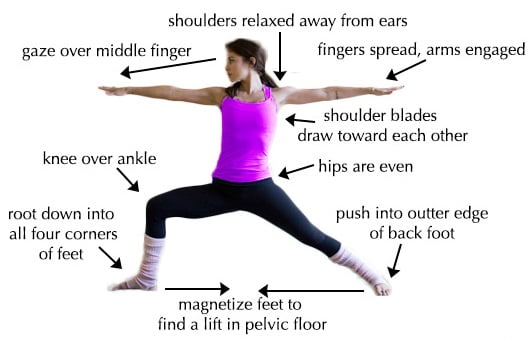
Source :- fitmw . com
Step By Step Instructions To Do Virabhadrasana II:
- Stand straight on the floor on your feet
- Separate your legs and try to keep them at least 3 to 4 feet away from each other
- Turn your left foot in between 45 to 60 degrees, and turn the right foot back to 90 degrees
- Align your right ankle with your left heel
- Slowly raise your hands until the hands get straight to your shoulders
- Keep your left ankle firmly on the ground and turn the right knee until the knee comes straight to the ankle
- Turn the head to the right at 90 degrees angle so that you can look at your right-hand
- Stay in the posture for 30 to 60 seconds
- After doing this, repeat all the steps on the left side.
TIPS:
Keep in mind that you need to keep your back straight
Do this asana 10 times
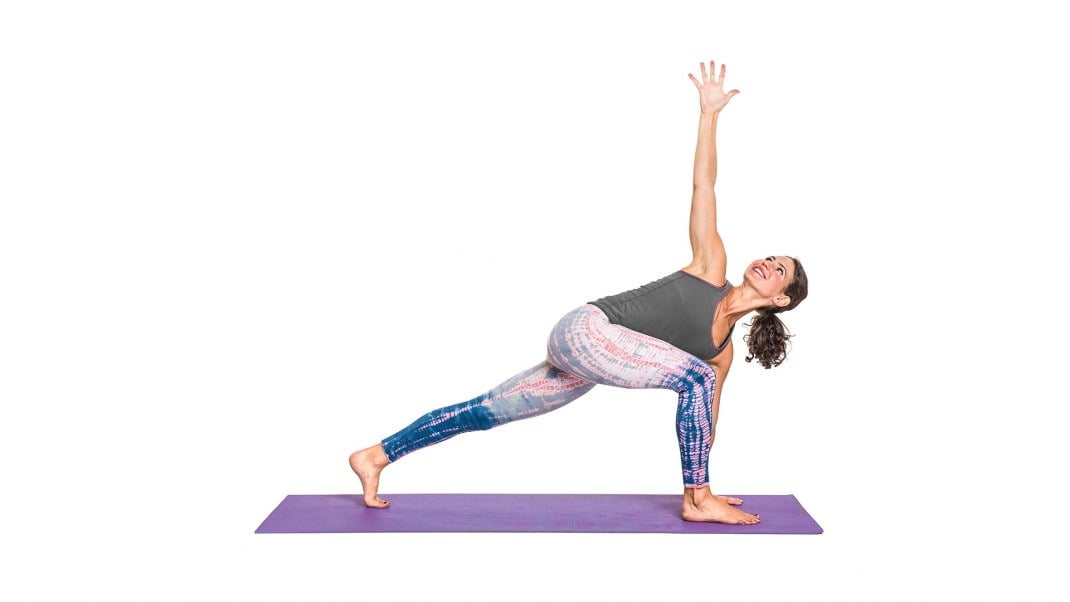
Source :- gaia . com
Utthita Parsvakonasana (Extended Side Angle Pose)
Just like every other pose of yoga, the Utthita Parsvakonasana has many health benefits. This yoga for bladder also beneficial for hips, granites, hamstrings, shoulders, chest, and spinal cord pulls up. Let’s now check out the steps of the Utthita Parsvakonasana below:
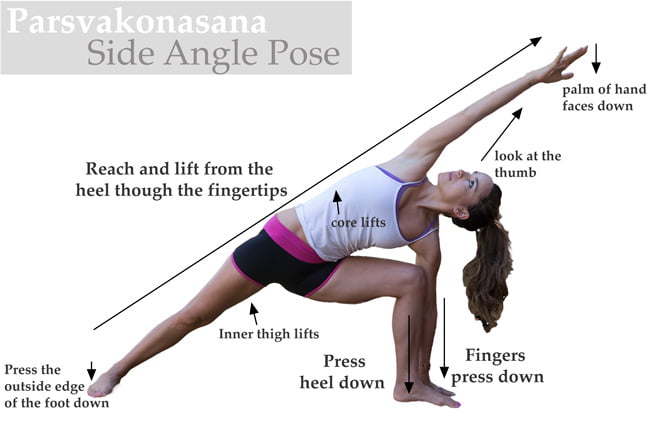
Source :- static1.squarespace . com
Step By Step Instructions To Do Utthita Parsvakonasana:
- Stand on the floor in Tadasana
- Inhaling, open your feet up to 4 – 4.5 feet
- Turn your left foot in 10 to 20 degrees, and turn the right foot back to 90 degrees (Align your right ankle with left heel)
- Slowly raise your hands until the hands are straightened to your shoulders (Palms should be on the floor below)
- Keep your left ankle firmly on the ground and turn right knee until the knee comes straight above the ankle
- If you have such flexibility, then parallel your thighs from the ground
- Turn your torso to the right by exhaling
- Place your right hand on the floor or on your ankles, or on the right side of the right foot, according to your ability
- Take your left hand toward the ceiling
- Finally, your left hand and leg should be in a straight line
- Now lift your head upwards so that you can see your left-hand fingers
- Stay in the asana for 30 to 60 seconds
- Gradually, such as strength and flexibility in your body, you can increase the time
- After practicing on the right side, making all the steps on the left side too
TIPS:
Take care that you turn from your hip joints and not from your back joints
Keep in mind that while doing this asana, keep your torso and leg in the same direction
Do not exceed the time of holding the asana more than 90 seconds

Source :- yogaposesguide . com
Parivrtta Parsvakonasana (Revolved Side Angle Pose)
This yoga for bladder is a modified version of the Utthita Parsvakonasana. These two Asanas are almost the same. There is slight difference between the two Asanas. Let’s now check out how you can do the Parivrtta Parsvakonasana to get rid of bladder problem.
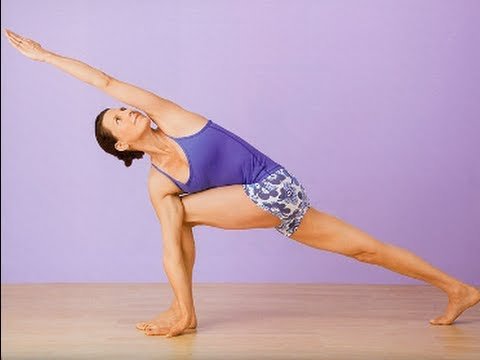
Source :- i.ytimg . com
Step By Step Instructions To Do Parivrtta Parsvakonasana:
- Stand on the floor in Tadasana
- Inhaling, open your feet up to 4 – 4.5 feet
- Turn your left foot in 45 to 60 degrees, and turn the right foot back to 90 degrees (Align your right ankle with left heel)
- Slowly raise your hands until the hands are straightened to your shoulders (Palms should be on the floor below)
- Keep your left ankle firmly on the ground and turn right knee until the knee comes straight above the ankle
- If you have such flexibility, then parallel your thighs from the ground
- Turn your torso to the right by exhaling
- Place your right hand on the floor or on your ankles, or on the right side of the right foot, according to your ability
- Take your left hand toward the ceiling
- Finally, your left hand and leg should be in a straight line
- Now lift your head upwards so that you can see your left-hand fingers
- Stay in the asana for 30 to 60 seconds
- Gradually, such as strength and flexibility in your body, you can increase the time
- After practicing on the right side, making all the steps on the left side too
TIPS:
If you can’t touch the ground with your palm, then place both the palms near your chest to make a prayer pose
In the beginning, you may have difficulty maintaining your balance. If this is the case, fold a towel and place it under your feet or keep some other item on which you can place your leg
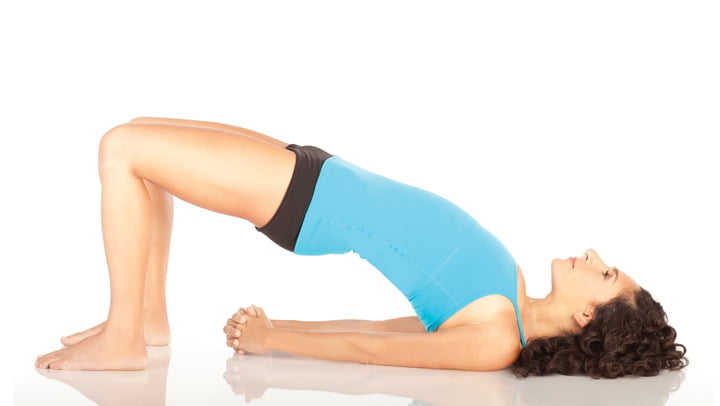
Source :- images.agoramedia . com
Setu Bandhasana (Bridge Pose)
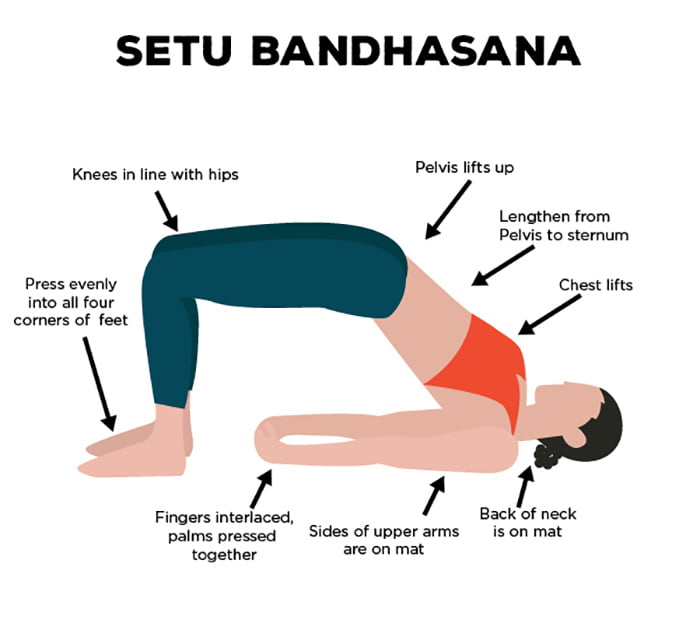
Source :- foodnhealth . org
Step By Step Instructions To Do Setu Bandhasana:
- Lie flat on the floor on your back
- Turn the legs closer to your hips by folding the legs (Get as close as possible)
- Put the weight on your hands and slowly raise the hips up (While doing this, breathe in)
- Keep feet firmly positioned
- Do not exceed your ability; gradually you can do more with practice
- Now join your both hands
- If possible, focus on the nose or look toward the roof
- Stay in this posture for 10 to 15 seconds, and then return the hips to the ground
- Leave the breath while you are coming down
- If possible, repeat this asana for 2 to 3 times
TIPS:
If your back is too tight then do not force to take your back higher
If you have trouble keeping your hips high, then you can put some support under the waist, like a broken stool or a chair
If there is an injury in your back, then do not practice this yoga for bladder
If there is an injury in your neck, do not practice this asana.

